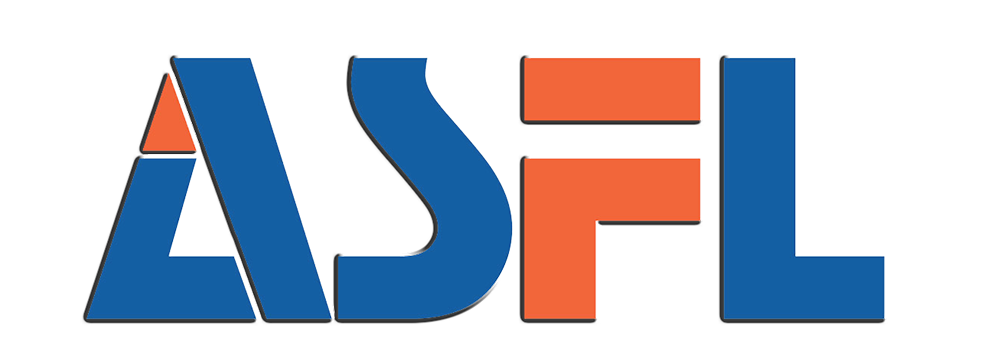Key Factors Affecting Quality in Bottle Filling Operations
Precision in Liquid Volume Measurement
Precision in liquid volume measurement is crucial in achieving consistent product quality and customer satisfaction. Accurate measurement ensures that customers receive the correct amount of product as advertised, preventing customer complaints and addressing potential regulatory issues. Errors in volume can lead to discrepancies in product quality and could harm a company's reputation. Advanced technologies, such as flow meters and volumetric filling systems, play a pivotal role in maintaining precision. Brands like Siemens and Endress+Hauser are recognized for their reliable flow meters that ensure consistent fill volumes. A report from the International Journal of Production Economics highlights that precision in measurement directly correlates with reduced waste and cost savings, boosting overall production efficiency.
Impact of Viscosity on Filling Accuracy
The viscosity of liquids directly impacts the accuracy and efficiency of the filling process. Liquids such as oils or syrups pose unique challenges due to their thickness, requiring specialized filling techniques to avoid errors. Piston fillers are effective for medium- to high-viscosity liquids, ensuring that each container receives the correct amount. Similarly, rotary fillers efficiently manage the filling of viscous products, adjusting to the product's flow characteristics. These methods are tailored to handle varying viscosity levels successfully. According to a study in the Journal of Food Engineering, understanding viscosity's impact on filling operations can significantly improve the accuracy of the process and product consistency.
Container Compatibility and Sealing Integrity
Selecting appropriate containers and caps is crucial for maintaining sealing integrity and preventing leaks. Ensuring compatibility between the container material and the liquid's characteristics can prevent issues like chemical interactions or product degradation. For instance, certain plastics may leach compounds when in contact with specific liquids, affecting the product's shelf life. By matching container properties with product attributes, companies can enhance product quality significantly. Case studies demonstrate that implementing effective sealing technologies, like improved bottle capping mechanisms, not only prevents leaks but also prolongs the shelf life of the product.
Importance of Regular Maintenance for Bottle Filling Machines
Calibration Checks for Filling Nozzles
Regular calibration checks for filling nozzles are essential to maintaining product consistency and preventing inaccuracies in the volume dispensed. These checks help ensure that the filling machine consistently delivers the correct amount of liquid, preserving both quality and regulatory compliance. Effective calibration methods involve using standards for measuring output and adjusting settings as necessary. Typically, the frequency of these checks should be based on machine usage, with high-use systems requiring more frequent assessments. Reports in the industry indicate that regular calibration is linked to improved production outcomes, with reductions in wasted product and increased overall efficiency.
Wear-and-Tear Monitoring in Capping Mechanisms
Monitoring wear-and-tear on capping mechanisms is crucial for ensuring proper sealing and sustaining operational efficiency. Neglected wear can lead to inadequate sealing, potential product leakage, and compromised product integrity. Common signs include loose caps, inconsistent sealing pressure, or visible damage on sealing surfaces. Industry best practices advocate for proactive maintenance based on wear indicators, typically occurring after substantial cycles of operation. Implementing regular inspections and timely maintenance can prevent costly downtimes and extend the lifespan of capping equipment, ensuring that the bottle filling process remains seamless.
Sanitation Protocols to Prevent Contamination
Implementing strict sanitation protocols is vital in bottle filling operations to prevent product contamination, especially for consumable goods. These protocols ensure that every component of the filling machine is clean and free from contaminants. Effective sanitation practices include daily cleaning regimens, thorough equipment inspections, and the use of sanitizers approved for food-grade applications. Frequency of sanitation practices should be dictated by industry standards tailored to the nature of the product being handled. Statistics demonstrate a strong correlation between rigorous sanitation and reduced instances of product spoilage or recalls linked to contamination. Adhering to these practices not only ensures compliance but also enhances product integrity and consumer safety.
Integrating Filling and Capping Machines for Seamless Operations
Synchronizing Speed Between Filling and Capping Units
The synchronization of speeds between filling and capping machines is crucial for avoiding bottlenecks and ensuring seamless operations. Proper alignment in processing speeds ensures that neither machine waits on the other, thus maintaining a continuous flow in production. Modern techniques and technologies such as servo-driven machines and real-time monitoring software facilitate this synchronization, allowing for dynamic adjustments to match the speed of the workflow. These advancements are vital as they help prevent delays and increase overall efficiency in bottle filling processes. A study of automated manufacturing systems highlights an approximate 30% rise in production efficiency achieved through effective synchronization techniques, underscoring its pivotal role in streamlined operations.
Automated Quality Checks for Cap Placement
Automated quality checks play a pivotal role in ensuring accuracy in cap placement, mitigating risks such as overfilling or underfilling. Technologies like cameras and sensors enable precise monitoring by detecting inconsistencies in cap positioning and flagging them for correction. This technology has distinct advantages over manual checks, offering higher speed, accuracy, and reliability. For instance, Antares Vision Group employs laser spectroscopy post-filling to verify cap placement and product quality, preventing defects like oxidation—supporting operational reliability. Such automated systems not only enhance product safety but also contribute significantly to maintaining consistent quality standards across manufacturing processes.
Handling Viscous Products Like Edible Oils
Filling and capping viscous products like edible oils present unique challenges due to their thick consistency, which affects machinery performance. To handle these products effectively, specialized equipment and techniques are necessary. Machines equipped with adjustable pressure settings and precision nozzles cater to these requirements by accommodating the slow flow rate typical of viscous fluids. Employing advanced filling capping machines can prevent wastage and ensure consistent fill levels. Industry experts recommend periodic adjustments and maintenance to optimize equipment performance when dealing with thick liquids. Effective handling not only enhances operational efficiency but also guarantees product quality, minimizing the chances of leakage and ensuring a tight seal.
Selecting a Reliable Liquid Filling Machine Manufacturer
Evaluating Technical Support and Spare Parts Availability
When choosing a reliable liquid filling machine manufacturer, the availability of technical support and spare parts is crucial. This choice can directly impact operational efficiency by minimizing downtime. It's important to consider whether the manufacturer provides comprehensive technical support, such as training and troubleshooting assistance, and ensures easy access to spare parts. A practical checklist for evaluating manufacturers on this criterion would include assessing their customer service response time, availability of replacement parts, and customer testimonials that speak to these aspects. Reviews and positive client feedback can further substantiate claims about the reliability and effectiveness of a manufacturer's support and spare parts provision.
Customization Options for Diverse Product Lines
Customization options offered by manufacturers can be a game-changer for businesses with diverse product lines that require specific filling solutions. Such flexibility allows companies to adapt their machinery to unique product requirements, like adjustable fill sizes or changes in filling technologies. For instance, certain manufacturers might offer machines that can be modified to handle various liquid viscosities or incorporate different filling speeds to suit different products. Successful businesses often cite their ability to customize machinery as a key to efficiently managing a varied product line, demonstrating how tailored solutions can enhance productivity and product quality.
Compliance with Industry Safety Standards
Ensuring compliance with industry safety standards is a necessity for liquid filling machine manufacturers. Non-compliance can lead to significant risks, including potential safety hazards for operators or unsanctioned production stoppages. Key safety standards relevant to the food and beverage industries include guidelines like the FDA's regulations for manufacturing equipment. Experts and regulatory bodies emphasize that adhering to these safety practices not only protects businesses legally but also upholds product integrity and consumer trust. Therefore, choosing a manufacturer well-versed in these standards is critical for maintaining safe and compliant operations.
Implementing Quality Control Protocols in Automated Systems
Inline Sensors for Real-Time Volume Verification
Inline sensors play a pivotal role in enhancing the filling process by providing real-time volume verification, which is essential for achieving higher fill accuracy. These sensors continuously monitor the liquid level within each container during the filling process, ensuring that the correct volume is dispensed every time. Various types of inline sensors are available, including capacitive, ultrasonic, and optical sensors, each operating on unique principles to detect different levels of fluid accurately. For example, ultrasonic sensors measure the time it takes for a sound pulse to reflect back from the liquid surface, while capacitive sensors detect changes in capacitance as the liquid level changes. Companies like ABC Manufacturing have successfully implemented these technologies, leading to fewer product recalls and increased customer satisfaction, demonstrating the value of inline sensors in maintaining production integrity.
Automated Rejection Systems for Defective Containers
Automated rejection systems are vital for enhancing quality control by ensuring that defective containers are promptly removed from production lines, thereby preventing them from reaching customers. These systems employ a range of technologies to identify and discard containers that don't meet set quality standards. Basic mechanical systems may use weight checks, while advanced imaging systems analyze container integrity using high-speed cameras and AI algorithms. According to data from XYZ Inc., the introduction of automated rejection systems reduced the incidence of defective products by over 20%, resulting in improved quality assurance and enhanced customer trust. This not only minimizes waste but also safeguards the brand's reputation by delivering consistently high-quality products.
Data Logging for Traceability and Process Optimization
Data logging is crucial for fostering traceability throughout production processes and identifying areas ripe for optimization. By systematically recording production data, companies gain invaluable insights into operation performance, allowing them to analyze trends and support continuous improvement initiatives. For instance, patterns in the data can highlight equipment inefficiencies or process bottlenecks, enabling preemptive action before issues escalate. An example includes DEF Industries, which leveraged data logging to refine its operations, leading to a 15% boost in efficiency through targeted equipment upgrades and process adjustments. This use of data not only optimizes current operations but also lays the foundation for achieving strategic growth objectives.
Table of Contents
- Key Factors Affecting Quality in Bottle Filling Operations
- Importance of Regular Maintenance for Bottle Filling Machines
- Integrating Filling and Capping Machines for Seamless Operations
- Selecting a Reliable Liquid Filling Machine Manufacturer
- Implementing Quality Control Protocols in Automated Systems





